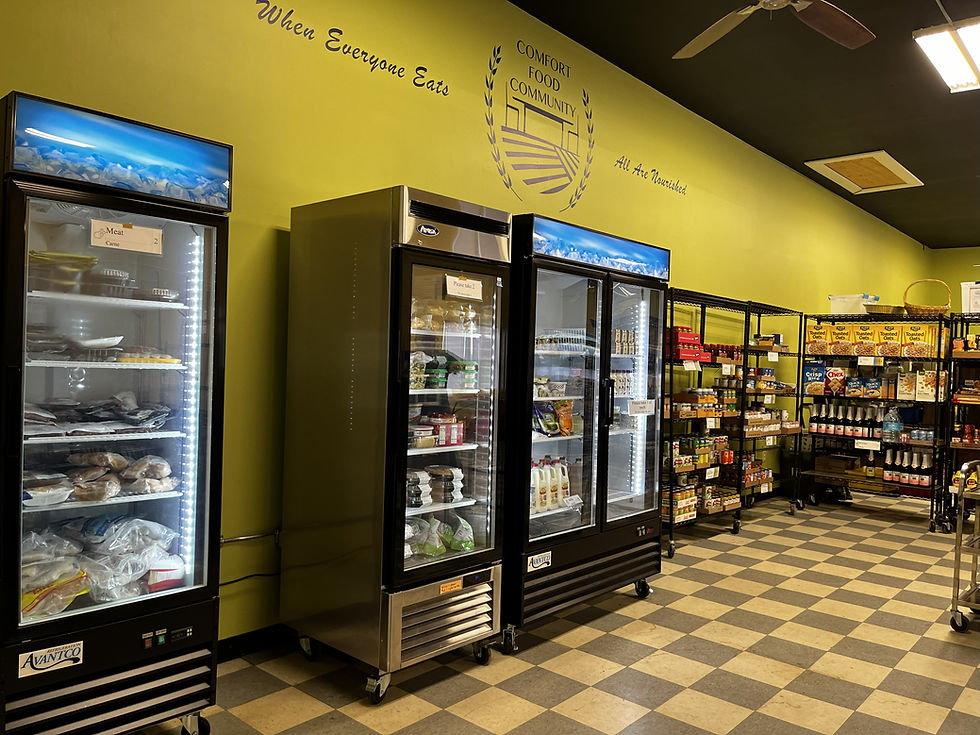What is Food Insecurity, Exactly?
- Alyssa
- Aug 11, 2023
- 2 min read
Food is not only essential for our survival, but it is also an integral part of our social and cultural fabric that weaves us together as a community. Unfortunately, not everyone has convenient and consistent access to food. When people are uncertain about the quality or frequency of the food they can access, we call this “food insecurity.”

Oftentimes, when we think about donating to a food pantry, we approach it with the goal of ending hunger. While CFC is a firm believer that nobody in our community should go hungry, we also know that hunger is not the only indicator of food struggle.
Households that can’t access a variety of high quality and desirable foods, and households that experience a reduction in the amount of food they can get are also considered food insecure. Food insecurity can lead to hunger, but it doesn’t have to, and food insecurity alone can be enough to cause negative health outcomes like chronic disease and developmental delays in children. These are all examples of food insecurity:
Choosing between purchasing needed medication, utilities, car payments, rent, etc. or food.
A parent reducing their portion size or skipping a meal to feed their children.
Opting for less satiating and nutritious options at the grocery store due to cost.
Not going to a community, neighborhood, or family gathering (like a potluck or holiday meal) because of a lack of food.
Low-income households are certainly more likely to experience food insecurity, but income is not the only factor at play. Location, access to transportation, ability status, household composition, employment status, and race are all factors that contribute to food insecurity.

Rural communities are more likely to face food insecurity than their urban and suburban counterparts, despite the abundance of fresh foods produced in rural communities. Additionally, the Supplemental Nutrition Assistance Program (SNAP) often only services the lowest income families, leaving a group of families who do not qualify for government assistance but are still experiencing food insecurity to fend for themselves. According to Feeding America, 25% of food insecure households in Washington County and 37% in Saratoga County do not qualify for SNAP.
Comfort Food Community has made it our mission to fill these gaps and address food insecurity in our communities. Our food access programs prioritize providing nutritious, fresh, and local foods to everyone in the community, regardless of income. Learn more about how you can benefit from these programs or get involved in the work we do through volunteering and donating!




Comments